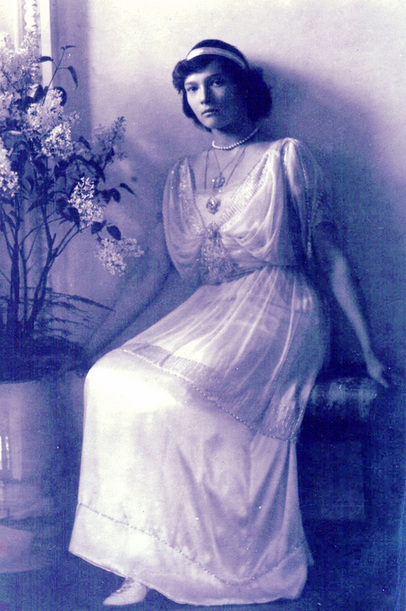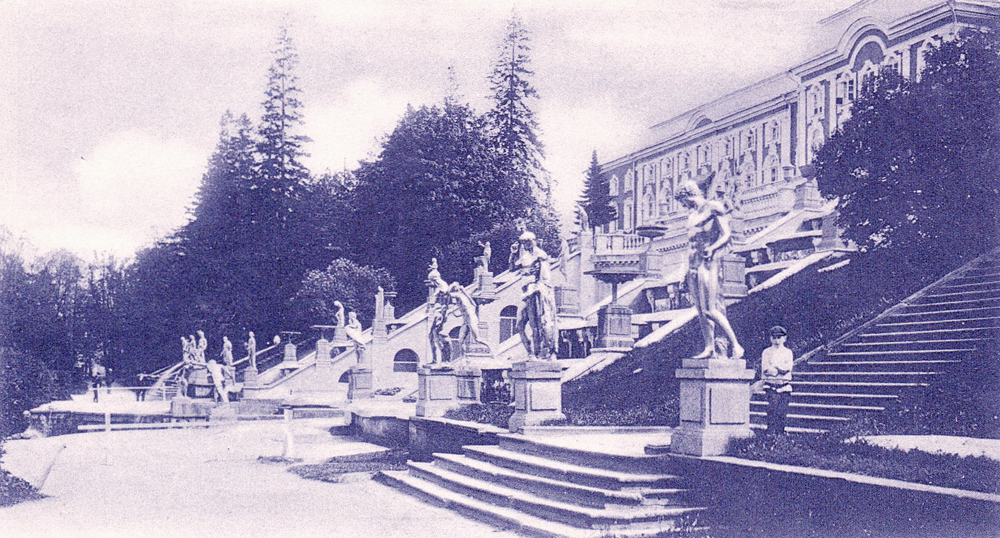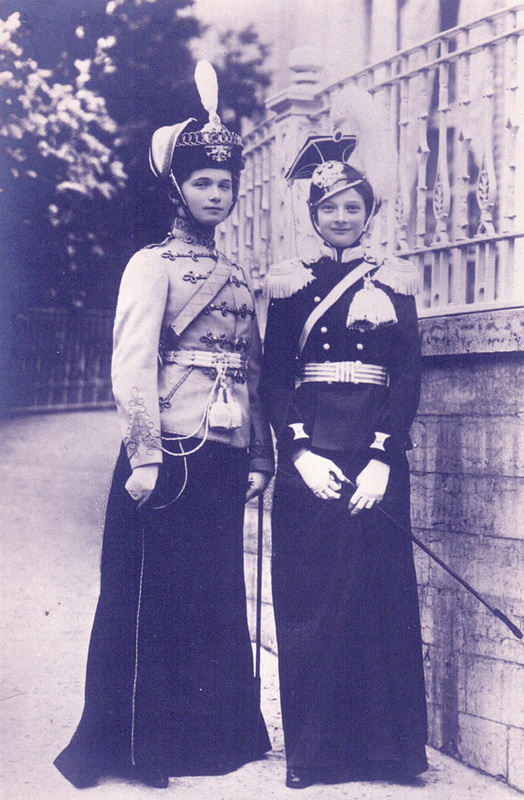Grand Duchess Tatiana (1897-?1926)Tatiana, the Tsar’s second daughter, was born at Peterhof, Peter I’s palace on the coast of the Gulf of Finland, at 10.40 am on June 10th 1897 (May 29th OS). Physically, she was tall, with a willowy athletic figure, long fair hair and blue eyes.
Reports as to her nature and character vary. Her letters reveal a person capable of great affection, yet who could also at times be oddly airy and emotionally detached. The other children referred to her in private as “the governess” and it appears that Alexandra, her mother, trusted her to organise her siblings and keep the household in order. This became particularly significant as Alix’s psychological ailments and their concomitant physical manifestations, which included an irregular heartbeat, worsened with the passage of time. In line with the general mood of the late Victorian period, Tatiana and her sisters were expected to exhibit certain “accomplishments”, skills which would fit them into their general society and also fit them for the dynastic marriages which would be expected of daughters of a Romanov Tsar. Tatiana was, apparently, a very accomplished pianist, like her sister Olga. However, it was noted that her technique, while formidable, was, by comparison to Olga, dry and lacking in emotional expression. She would also, of course, have learned all the techniques of contemporary social dancing, with the common steps, Waltz, Polka and Polonaise, amongst others, being taught. Available film footage shows Tatiana, along with all the other girls enjoying her dancing, especially when the family was on board the family yacht, the Standard. Tatiana especially enjoyed the family’s summer cruises in the Gulf of Finland and the Baltic, which can be seen in her letters to friends and the animated photographs of her which survive from this time. She also enjoyed sports and was a keen Tennis player and umpire. Tatiana was also known as the family diplomat. At times, when she was older she gained a great deal of respect in the eyes of the foreign diplomats who visited the Tsar, who commented favourably on her poise and self-possession . She was in this way preferred to Olga, who was known for her blunt and sometimes abrasive manner of speech. Also, Tatiana was by far the more extroverted of the two oldest girls, and thus was able to add the correct mood of necessarily sunny superficiality to any social situation. This is not to suggest that Tatiana was in any way personally superficial, quite the contrary. I’m simply pointing out that she was socially astute enough to know what people needed to hear. This probably accounts for the varying reports about her character, in that, the reporters of it had actually been “mirrored” by Tatiana in a social context. They thus would have simply, in some respects, have been holding pleasant conversations with themselves, while Tatiana skilfully gave nothing away about herself or her own inner life. A trait the more openly emotional Olga was incapable of matching and one that the very busy Royal Family of today also uses with great skill in its contacts with people of all walks of life from all over the world. Rescue In recent years there has been much controversy about the alleged “bones” discovered in the Koptiaki Forest outside Ekaterinburg in 1991. I am sure that all of you who have an interest in this labyrinthine matter have already seen the various excellent documentaries aired on this subject on television, most notably a recent one on Channel 5 which went into the discovery of the bones in depth as well as providing a scientific insight into why in certain areas these bones have been accepted as those belonging to the family. These bones, allegedly including five members of the Tsar’s family were buried in July 1998 in a grand ceremony in St.Petersburg. Recently, it is further alleged that the remaining two skeletons, apparently missing from those discovered in 1991, have been found and authenticated. But there is another side to the story. It is worth noting that the Russian Orthodox Church, which declared the family saints and Passion Bearers in the year 2000, refused to preside over the burial and to this day does not accept the bones buried in 1998 as genuine. This stance was given stunning corroboration by scientific tests carried out on the “bones” at Stanford University in 2004 in the first DNA comparison with a member of the Tsar’s direct family, the Tsarina’s sister Grand Duchess Elizabeth, a comparison which proved negative. These new results were presented at a scientific conference in Australia and have appeared in peer-reviewed scientific journals. Other DNA tests have been carried out in 2007 following the alleged recovery of the bones of the two "missing" children. These appeared to be from the same family as that buried in 1998, but the stance of the Orthodox Church remains as it has always done and the Stanford team have stood by their 2004 findings. The bones buried in 1998 and those found in 2007 are not those of members of the Imperial Family. There is actual documentary evidence here in the UK which suggests that one of the Tsar’s daughters was rescued from Ekaterinburg in a military operation which took off on July 1st 1918. The evidence refers to the “child” being brought to this country and also refers to the child as “she”. As to what that evidence is, where it fits into the rest of the story, and its intriguing connection to former Inteligence Officer Ian Fleming and his 1957 James Bond novel “From Russia with Love”, I refer you to my novel and my sources, cited at the back of the book. Do your own research, look at both sides of the story with an open mind and come to your own conclusions... |
Grand Duchess Olga | NEXT PAGE
|
All website content copyright © Steven Ingman-Greer. All rights reserved.



